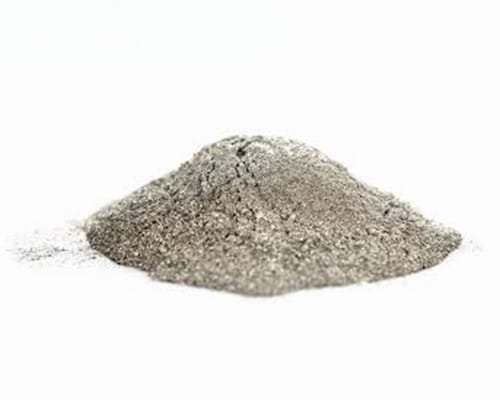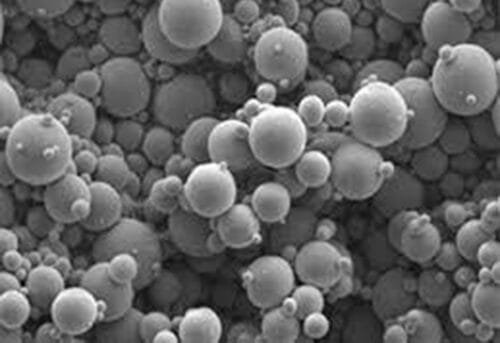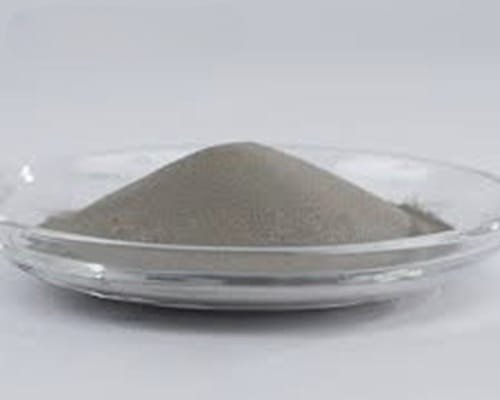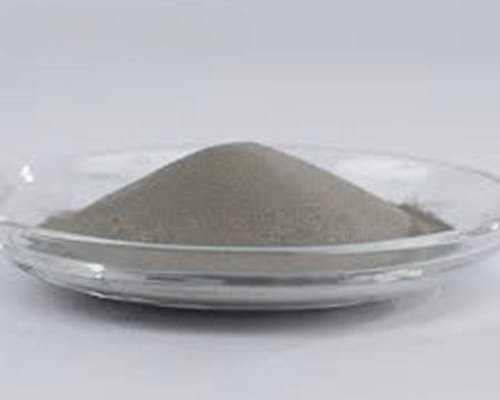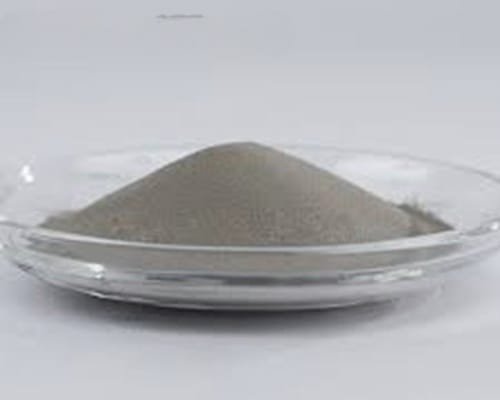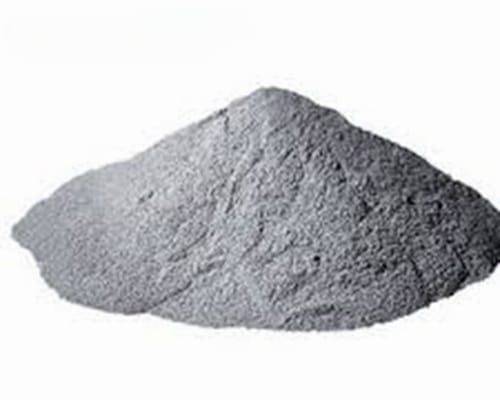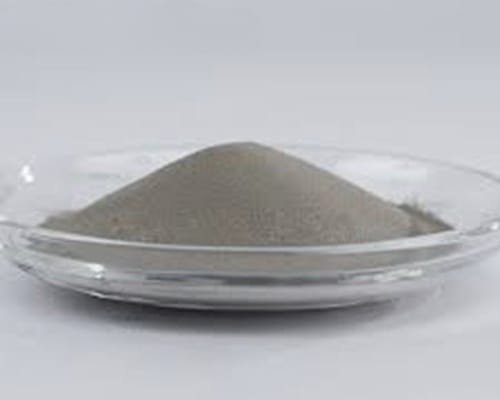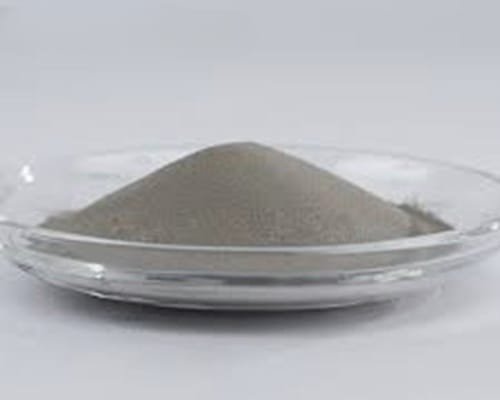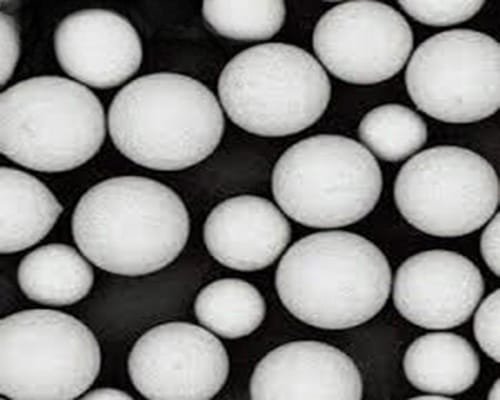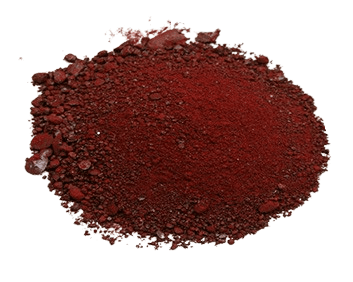Alloy Powder
Alloy Powder: Cutting‐Edge Materials for High-Performance Applications
Metal powders are finely divided metals that serve as the foundation for a host of advanced manufacturing techniques. Their unique properties make them indispensable in industries ranging from aerospace to automotive, electronics, and even additive manufacturing. This article explores what metal powders are, how they are produced and processed, their myriad applications, and the important safety concerns they pose. We also address specific questions such as: “What is iron metal powder used for?”, “What is metal powder used for?”, “Is metal powder hazardous?”, “What is the powder that burns through metal?”, “Can thermite destroy steel?”, and “What metal powders are explosive?”
Table of Contents
Chapter 1
Introduction
The rapid advancement in high-temperature and corrosive environment applications has led to the development of specialized alloy powders. These powders are meticulously engineered to deliver properties that are often unachievable by conventional bulk materials. Whether it is for aerospace gas turbines, biomedical implants, or the latest 3D printing technologies, the precise composition and manufacturing of alloy powders allow engineers and designers to achieve performance levels required in modern high-end applications.
This article focuses on three major groups of alloy powders: 
Cobalt-Based Alloy Powders
Nickel-Based Alloy Powders
High-Entropy Alloy Powders
Each category is formulated with a unique combination of elements that bestow exceptional mechanical, thermal, and chemical properties. We also explore the applications, benefits, and challenges associated with these advanced materials.
Chapter 2
1. Cobalt-Based Alloy Powders
 Cobalt-based alloys are renowned for their excellent high-temperature performance and superior oxidation resistance. They are widely used in applications that require robust mechanical integrity under extreme conditions, such as aerospace gas turbines and biomedical implants.
Cobalt-based alloys are renowned for their excellent high-temperature performance and superior oxidation resistance. They are widely used in applications that require robust mechanical integrity under extreme conditions, such as aerospace gas turbines and biomedical implants.
Alloy 188 (UNS R30188) Powder
Composition:
Elements: Cobalt (Co), Nickel (Ni), Chromium (Cr), Tungsten (W)
Properties and Applications:
Alloy 188 Powder is engineered for exceptional high-temperature strength and oxidation resistance. These properties make it an ideal candidate for aerospace applications, particularly in gas turbine components, where materials must withstand severe thermal cycling and oxidative environments. Its composition allows it to maintain its integrity even at elevated temperatures, ensuring long-term reliability in demanding applications.
L605 Alloy Powder (UNS R30605)
Composition:
Elements: Cobalt (Co), Chromium (Cr), Tungsten (W), Nickel (Ni)
Properties and Applications:
L605 Alloy Powder is prized for its excellent corrosion resistance and resistance to high-temperature oxidation. Its unique elemental balance not only makes it suitable for high-temperature environments but also for applications where biocompatibility is a critical factor. Common applications include biomedical implants, gas turbine parts, and components used in aerospace. The material’s durability and stability under harsh conditions ensure its continued use in applications where failure is not an option.
Chapter 3
2. Nickel-Based Alloy Powders
Nickel-based alloys are among the most versatile and widely used materials in high-temperature and corrosive environments. Their formulation allows for a combination of strength, ductility, and corrosion resistance that is necessary for critical components in aerospace engines, chemical processing, and marine applications.
Hastelloy X Powder
Composition:
Elements: Nickel (Ni), Iron (Fe), Chromium (Cr), Molybdenum (Mo)
Properties and Applications:
Hastelloy X Powder is developed to endure extremely high temperatures and corrosive environments. It is primarily used in high-temperature structural components such as those found in aerospace engines, turbine components, and combustion chambers. The alloy’s ability to maintain mechanical strength under prolonged exposure to heat makes it a favorite in industries that demand high reliability in severe operating conditions.
IN100 Alloy Powder (UNS N13100)
Composition:
Elements: Nickel (Ni), Cobalt (Co), Chromium (Cr), Aluminum (Al), Titanium (Ti)
Properties and Applications:
IN100 Alloy Powder stands out for its superior high-temperature strength and exceptional resistance to creep—a deformation that occurs under prolonged stress at high temperatures. This makes the alloy particularly suited for manufacturing aerospace engine blades where both high strength and longevity are critical. The alloy’s performance in extreme environments translates directly into increased safety and efficiency in aerospace applications.
Inconel 625 Powder (UNS N06625)
Composition:
Elements: Nickel (Ni), Chromium (Cr), Molybdenum (Mo), Niobium (Nb)
Properties and Applications:
Inconel 625 Powder is known for its outstanding resistance to oxidation and corrosion, even in the harshest environments. This alloy is commonly used in marine applications, chemical processing, and aerospace components. Its ability to withstand aggressive chemical exposures while retaining high mechanical strength makes it a top choice for engineers designing components for critical applications.
Inconel 713C Powder (UNS N06625)
Composition:
Elements: Nickel (Ni), Aluminum (Al), Chromium (Cr), Molybdenum (Mo)
Properties and Applications:
Inconel 713C Powder is engineered primarily for high-temperature turbine blades and combustion chambers. The combination of elements gives it the necessary properties to resist thermal degradation and oxidation while maintaining structural integrity. This makes it an ideal material for components that experience rapid temperature changes and extreme operating conditions in modern turbines.
Inconel 718 Powder (UNS N07718)
Composition:
Elements: Nickel (Ni), Chromium (Cr), Molybdenum (Mo), Iron (Fe), Niobium (Nb)
Properties and Applications:
Inconel 718 Powder is a widely used material in aerospace and gas turbine applications due to its superior mechanical properties at high temperatures. It is particularly valued for its balanced combination of strength, ductility, and resistance to high-temperature corrosion. This alloy finds use in spacecraft components, gas turbines, and other structural elements that require reliable performance under extreme conditions.
Waspaloy Powder (UNS N07001)
Composition:
Elements: Nickel (Ni), Chromium (Cr), Molybdenum (Mo), Cobalt (Co), Titanium (Ti)
Properties and Applications:
Waspaloy Powder is engineered for exceptional creep resistance and high-temperature strength. It is commonly used in aerospace engine turbine disks and gas turbines, where the material must endure prolonged exposure to high stresses and temperatures. Its formulation is optimized to minimize deformation over time, ensuring that components remain dimensionally stable under constant high-temperature service.
Rene 88DT Alloy Powder
Composition:
Elements: Nickel (Ni), Cobalt (Co), Chromium (Cr), Aluminum (Al), Titanium (Ti)
Properties and Applications:
Rene 88DT Alloy Powder is specifically formulated for high-temperature gas turbine blades and turbine disks. Its composition allows it to withstand the rigorous demands of high-speed, high-temperature operations typical of modern turbine engines. The excellent balance of mechanical strength and oxidation resistance makes this alloy an ideal choice for critical components in aerospace applications.
Rene 95 Alloy Powder
Composition:
Elements: Nickel (Ni), Cobalt (Co), Chromium (Cr), Titanium (Ti)
Properties and Applications:
Rene 95 Alloy Powder is highly regarded for its excellent high-temperature strength and creep resistance. This makes it particularly suitable for aerospace applications where components are subjected to prolonged high thermal and mechanical loads. The alloy’s robust properties ensure reliable performance even under the most extreme operating conditions.
Chapter 4
3. High-Entropy Alloy Powders
High-Entropy Alloy (HEA) Powders represent a new frontier in materials science. Unlike traditional alloys that are based on one or two primary elements, high-entropy alloys contain multiple principal elements. This unique composition can result in exceptional mechanical properties, enhanced corrosion resistance, and a high-entropy effect that leads to improved stability at elevated temperatures.
High-Entropy Alloys for 3D Printing
Composition:
Elements: Typically a combination of Fe, Al, Ni, Cr, Co, Mo, and sometimes additional elements.
Properties and Applications:
These powders are specifically designed for additive manufacturing (3D printing) applications. The multi-element composition delivers high strength and outstanding corrosion resistance, making them suitable for critical aerospace, nuclear, and high-performance industrial applications. Their ability to form complex microstructures through 3D printing has opened new possibilities in creating components with intricate geometries that are otherwise difficult to manufacture using traditional techniques.
FeAlNiCrX High-Entropy Alloys Powder
Composition:
Elements: Iron (Fe), Aluminum (Al), Nickel (Ni), Chromium (Cr)
Properties and Applications:
FeAlNiCrX High-Entropy Alloy Powder is tailored for high-temperature applications. The carefully balanced composition enhances wear resistance and oxidation resistance, making it a strong candidate for applications where durability and long-term stability under thermal stress are required. This powder is particularly promising for use in environments that demand materials with superior mechanical properties and resistance to degradation over time.
Chapter 5
Applications and Benefits
The selection of alloy powder type is closely tied to its end use. The exceptional performance characteristics of these materials lend themselves to a wide range of high-performance applications:
Aerospace & Gas Turbines:
Many of the powders discussed, such as Inconel 718, Rene 95, and Waspaloy, are vital in the manufacture of turbine blades, disks, and combustion chambers. Their high temperature strength, oxidation resistance, and creep resistance ensure the reliability and longevity of aerospace engines and gas turbines.Additive Manufacturing (3D Printing):
High-entropy alloy powders and several nickel-based alloys are being used in 3D printing to produce complex geometries with superior performance attributes. This application is revolutionizing industries by enabling rapid prototyping and production of parts with minimal waste.Biomedical Implants:
Certain cobalt-based alloys like L605 are used in biomedical applications due to their excellent corrosion resistance and biocompatibility. Their mechanical properties are suited to implants and other medical devices that must perform reliably over long periods.Chemical Processing & Marine Applications:
Materials such as Hastelloy X and Inconel 625 are known for their outstanding resistance to corrosion and chemical attack, making them ideal for chemical reactors, pipelines, and marine components.High-Temperature Structural Components:
Alloys like IN100 and Inconel 713C find their use in high-temperature structural applications, where dimensional stability and resistance to thermal degradation are paramount.
Chapter 6
Challenges in Alloy Powder Production
While alloy powders offer significant advantages, several challenges must be addressed to maximize their potential:
Production Consistency:
The production of alloy powders requires precise control of composition and particle size distribution to ensure uniform performance. Any deviation can lead to inconsistent properties in the final component.Cost:
The advanced processes involved in manufacturing these powders, such as gas atomization and high-energy ball milling, can be expensive. This cost factor must be balanced against the performance benefits in high-end applications.Handling and Storage:
Alloy powders, especially those used in additive manufacturing, must be handled in controlled environments to avoid contamination and oxidation. Specialized storage solutions are required to maintain their quality over time.Recycling and Sustainability:
As industries move toward sustainable practices, recycling alloy powders without compromising their properties remains a challenge. Research is ongoing to develop processes that allow for the recovery and reuse of these advanced materials.
Chapter 7
The Future of Alloy Powder Technology
The field of alloy powders is rapidly evolving. Innovations in processing techniques and material science continue to push the boundaries of what these materials can achieve:
Nanostructuring:
Advances in nanotechnology are enabling the creation of alloy powders with tailored nanostructures that can enhance mechanical properties and resistance to wear.Machine Learning & AI:
The integration of machine learning in the design and production of alloy powders is streamlining the optimization of compositions. These technologies help predict how changes in formulation can impact performance, leading to faster innovation cycles.Sustainable Manufacturing:
Efforts to improve recycling techniques and reduce production waste are gaining momentum. Research into eco-friendly processes is crucial for meeting both economic and environmental objectives.Expanding Applications:
As industries continue to explore additive manufacturing, high-performance aerospace, and advanced biomedical applications, the demand for highly specialized alloy powders is set to increase. This expansion will likely drive further improvements in material properties and processing methods.
Chapter 8
Frequently Asked Questions (FAQs)
What are alloy powders and why are they important?
Alloy powders are finely divided materials composed of multiple metal elements designed to deliver specific mechanical, thermal, and chemical properties. They are crucial in high-performance applications because they allow for precise control over material composition, enabling the manufacture of components that can withstand extreme operating environments such as high temperatures, corrosive chemicals, and mechanical stresses.
How do cobalt-based alloy powders differ from nickel-based alloy powders?
Cobalt-based alloy powders, such as Alloy 188 and L605, are primarily known for their high-temperature strength and oxidation resistance, making them ideal for gas turbine parts and biomedical applications. In contrast, nickel-based alloy powders, including Hastelloy X, IN100, and various Inconel grades, offer a balanced combination of high-temperature strength, excellent corrosion resistance, and creep resistance, which is essential for aerospace engines and high-temperature structural components.
What applications typically use Alloy 188 and L605 powders?
Alloy 188 Powder is extensively used in aerospace gas turbine components due to its excellent high-temperature strength and oxidation resistance. L605 Alloy Powder, with its superior corrosion and oxidation resistance, is also used in aerospace and gas turbine components, as well as biomedical implants where biocompatibility is crucial.
What makes nickel-based powders like Inconel 625 and Inconel 718 popular choices in high-temperature applications?
Nickel-based powders such as Inconel 625 and Inconel 718 are favored for their exceptional resistance to oxidation and corrosion, along with high mechanical strength at elevated temperatures. These properties make them indispensable for applications in aerospace, marine, and chemical processing industries where reliable performance in harsh environments is required.
What is the significance of high-entropy alloy powders in additive manufacturing?
High-entropy alloy powders, such as those designed for 3D printing and the FeAlNiCrX alloy, contain multiple principal elements that result in exceptional strength, high corrosion resistance, and enhanced thermal stability. These properties make them highly suitable for additive manufacturing, where the ability to produce complex, high-performance components is a major advantage.
6. What are the advantages of powder metallurgy?
Powder metallurgy offers several benefits, including cost-effective production, the ability to create complex shapes, tight and uniform tolerances, excellent surface finishes, lower material waste, energy-efficient processes, and the ability to work with unique materials.
Can alloy powders be used for biomedical applications?
Yes, certain alloy powders—especially cobalt-based ones like L605—are engineered to be biocompatible. Their excellent corrosion resistance and mechanical stability under physiological conditions make them suitable for biomedical implants and devices.
What challenges are associated with the production of these high-performance alloy powders?
Key challenges include maintaining production consistency, controlling particle size distribution, managing production costs, handling and storage to prevent contamination or oxidation, and developing sustainable recycling methods. Advances in process technology and quality control are continuously addressing these issues.
How does the creep resistance of alloys like IN100 and Waspaloy impact their performance?
Creep resistance is critical in materials used in high-temperature applications because it prevents permanent deformation under prolonged stress. IN100 and Waspaloy, with their superior creep resistance, maintain their dimensional stability and mechanical integrity in demanding environments, ensuring reliable performance in applications such as turbine blades and disks.
What factors determine the choice between different nickel-based powders such as Inconel 713C and Inconel 718?
The choice depends on the specific application requirements. Inconel 713C is primarily used in high-temperature turbine blades and combustion chambers, where rapid thermal cycling occurs, while Inconel 718 is preferred in aerospace and gas turbine applications where a balance of strength, ductility, and corrosion resistance is required.
Are high-entropy alloy powders more expensive than traditional alloy powders?
High-entropy alloy powders can be more expensive due to their complex multi-element composition and the specialized processing techniques required to produce them. However, their superior performance in extreme conditions often justifies the higher cost, especially in high-value applications such as aerospace and nuclear industries.
What future developments can we expect in alloy powder technology?
Future advancements are likely to include the development of nanostructured powders, further integration of machine learning for process optimization, enhanced sustainable manufacturing practices, and expanded applications in additive manufacturing. These innovations will continue to improve the performance, consistency, and cost-effectiveness of alloy powders in high-performance sectors.
Chapter 9
Conclusion
Alloy powders represent a cornerstone of modern high-performance materials engineering. Whether it is cobalt-based powders like Alloy 188 and L605 for demanding aerospace and biomedical applications, nickel-based powders such as Hastelloy X, IN100, various Inconel grades, and Waspaloy for high-temperature and corrosive environments, or the innovative high-entropy alloys designed for next-generation additive manufacturing—their tailored compositions and properties offer unparalleled performance advantages.
Through continuous research and development, these advanced materials are poised to further revolutionize critical industries, enabling engineers to design components that operate reliably under the most extreme conditions. The FAQs included in this article serve to address common questions and underscore the significance of alloy powders in today’s high-tech world. As the landscape of materials science evolves, the future of alloy powder technology looks bright, with increased performance, sustainability, and versatility leading the way.
This in-depth discussion has explored the composition, applications, challenges, and future directions of alloy powders. It is clear that these advanced materials not only meet but exceed the demands of modern engineering, providing essential solutions across aerospace, additive manufacturing, biomedical, and chemical processing industries. With a strong focus on research and continual innovation, alloy powders will undoubtedly continue to play a pivotal role in the advancement of technology and the expansion of industrial capabilities.

